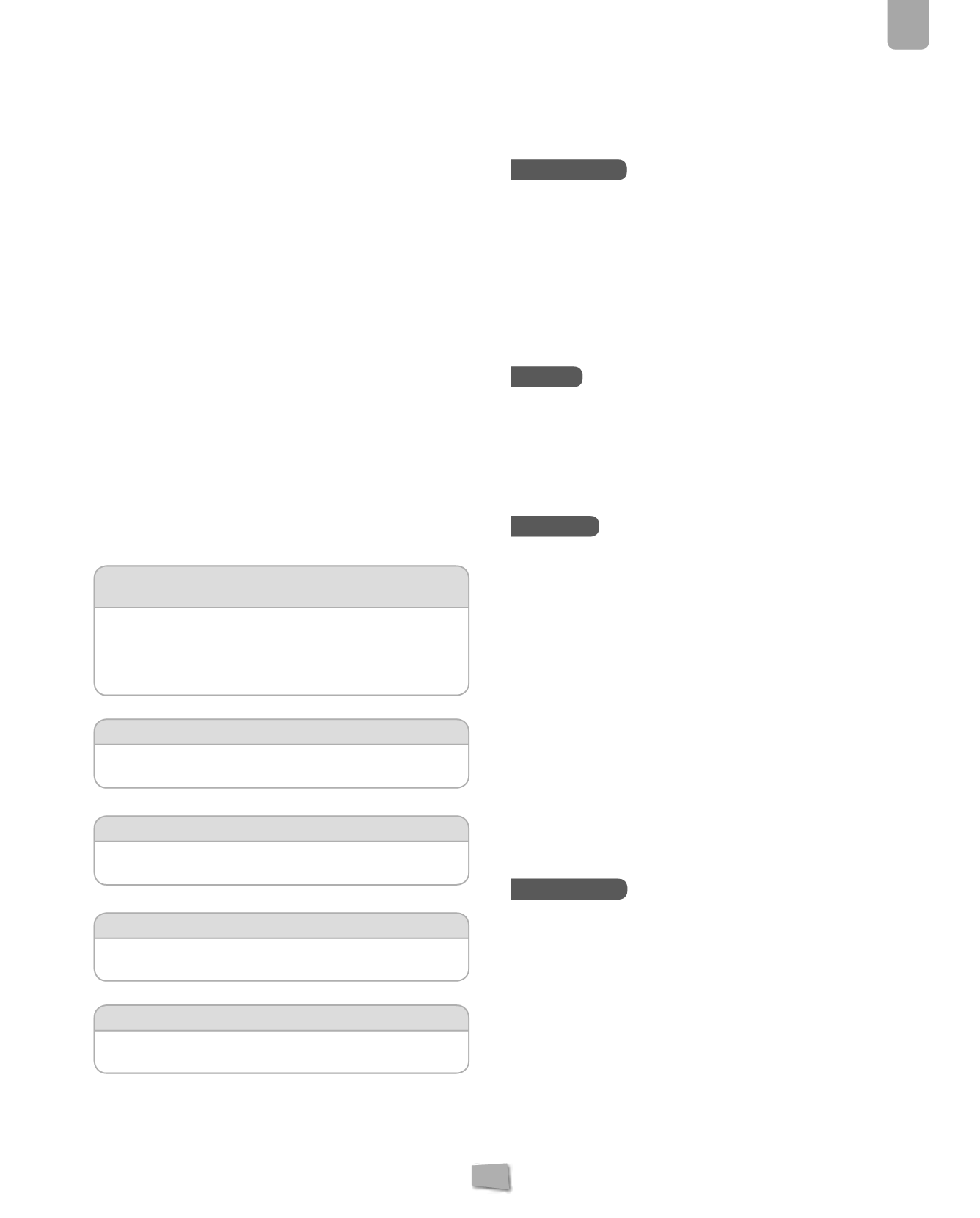
111
5
Structures
and structures associated with the railway, such as bridges and
stations, were built.
4.4.
Suspended structures
Suspended structures have been used since ancient times as
precarious suspension bridges thanks to the availability of ropes
and vines in the majority of civilisations.
These structures have the advantage of being able to adapt to the
loads which they have to bear (this can be verified by suspending
objects from a rope). This ability to change shape is a practical
drawback in modern buildings (it would be ridiculous if a bridge
changed its shape when a vehicle crossed it). However, it gives the
bridge the structure fixed loads that are superior to the variage
variable loads, whichmake the variable loads almost imperceptible
for the structure.
Suspended structures can be extremely light, but this is also a
drawback, especially when the wind is blowing from a lower to
higher level and lifts up the structure – the reason why weight is
added to the decks of bridges.
In the video on the collapse of the Takoma Narrows Bridge (US)
shows the effect of the wind on the deck of the bridge. We can
also see how materials which we think cannot be deformed, such
as steel and concrete, acquire an unusual ductility when facing
large loads.
Video:
THE COLLAPSE OF THE TAKOMA NARROWS
BRIDGE (US)
In the video on the collapse of the Takoma Narrows Bridge stu-
dents can learn about the effect of the wind on the deck of the
bridge and see how materials which we think cannot be defor-
med, such as steel and concrete, acquire an unusual ductility
when facing large loads.
Web link (virtual tour):
TEMPLE OF DEBOD
Virtual tour of the Temple of Debob. You can see what type it is
and what material it was built from.
Web link (virtual tour):
COLISIUM IN ROME
Virtual tour of the Coliseum in Rome. You can see what type it is
and what material it was built from.
Web link (virtual tour):
PARTHENON
Virtual tour of the Parthenon in Greece. You can see what type it
is and what material it was built from.
Web link (virtual tour):
EIFFEL TOWER
Virtual tour of Eiffel Tower. You can see what type it is and what
material it was built from.
Answer key
Understand
13.
Look at the photos:
a)
What kind of stress do the stones in the pyramid
support?
b)
What is the purpose of the spaces between the
lintels? Do they support stress?
The stone blocks on the pyramids are compressed. As with the
pillars on the bridge, the lintels are subjected to bending and
their purpose is to let water pass under them.
Apply
14.
Find different types of arches in vaulted structures on
the internet and in books about art and architecture
and draw them. Illustrate the different types of stress
they experience. What kinds are they?
The arches are subjected to compression. Some of the main
types are discussed on page 113 of this unit.
Analyse
15.
Identify what material was used to build the Eiffel
Tower. Find out which material we use nowadays for
these kinds of structures and list the advantages.
The Eiffel Tower was built using an iron alloy called cast iron
which contains a high level of carbon. Nowadays this type of
structure is made from steel. The main advantage with steel is
that it can be welded. The joints in the Eiffel Tower are riveted.
16.
Look at the different types of trusses. Which ones
would be better for a bridge? And for a roof? Give
reasons for your answers.
Beams with a horizontal upper section are well-suited for
building bridges because of the uniformity of their parts. The
slope of the trusses is ideal for roofs because it has a suitable
shape. However, in strictly structural terms, the shape of the
most suitable beam for bridge construction is when the upper
member has the shape of an arch. This is similar to the one
which was experimented with in the simulation of structures
section, although its construction is more complex.
Understand
17.
Look at the bridges and explain how they transfer
loads through the various structural elements which
you can see in the photos. For bridges of the same
length, which bridge would have thicker cables? Why?
In the first case, the weight of the deck is transmitted to the
catenaries through the cable suspenders. In the second, the
cable suspenders transmit the weight directly to the pillars.
The cable suspenders must be thicker in the second case
because the force which they support for a similar section of
the deck is larger because of the slope.


